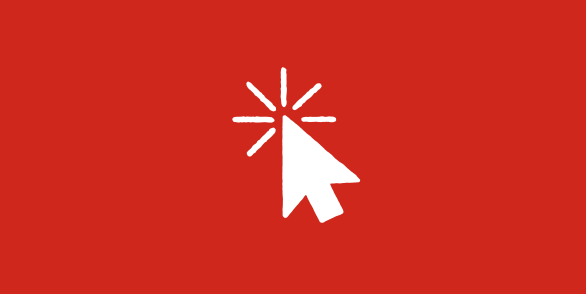Prioritizing mental wellness in the workplace means taking the time to understand what plays a role in creating potential burnout, and learning to identify the signs.
Working women have been particularly vulnerable to employee burnout. In a recent Deloitte survey, 50% of women stated that their stress levels are higher now than they were a year ago, and 23% report feeling employee burnout. In fact, a 2021 Women in the Workplace study by McKinsey found the gap in burnout between women and men has almost doubled.
"Women are now doing triple-duty and shouldering the responsibility of ensuring the wellbeing of their family, colleagues and team members," notes Alexis Krivkovich, Senior Partner at McKinsey & Company, who cited her organization's recent finding that women check on the well-being of their coworkers two to three times more often than their male counterparts. However, this is just one factor that plays into burnout among women at work.
How and why burnout happens
Senior Director of ADP Global HR Amy Freshman points out, "The sandwich generation — women who are juggling the demands of work while simultaneously caring for young children and aging parents — are particularly vulnerable to burnout."
Another contributing factor to burnout is intersectionality, when different societal categories (such as race, gender or socioeconomic class) intersect to create overlapping disadvantage and discriminatory experiences. "When you are one of the first, few or the only, it's a lot of pressure to perform," Ojeda explains. "Intersectionality creates an additional emotional load that can result in higher levels of stress, leading to burnout quicker."
3 clear signs of burnout
While it's important to understand the factors that contribute to burnout, learning to identify the early warning signs is also crucial. Dr. Lizette Ojeda, Diversity, Leadership & Wellbeing Speaker, defines burnout as, "prolonged, constant stress due to an imbalance between significant demands and limited resources." It doesn't just happen overnight. She described three red flags that can help identify someone who may be feeling the effects of burnout:
1. They're worn out.
Stress often manifests as physical signs, such as neck and back pain, high blood pressure, and persistent headaches. However, there is also a mental component, as too much cognitive load can lead to depression, anger and emotional outbursts.
2.They've checked out.
If a typically high-performing employee is exhibiting an overall lack of engagement, says they're feeling unmotivated or acts more cynical, they may be experiencing burnout. Many describe this as feeling like "the spark is gone."
3. They have more self-doubt.
After burning the candle at both ends, performance usually begins to suffer, both on the job and at home. This often results in the individual not being able to work at their usual capacity and making more mistakes than usual.
According to Ojeda, being mindful of these signs can help with identifying and even preventing burnout before it's too late. "Prevention is much less costly and time-consuming than intervention," she explains.
Nataly Kogan, entrepreneur and best-selling author, who wrote "Happier Now" and "The Awesome Human Project," noted that there are two mindsets that women can fall into when they're stressed, and both can contribute to burnout and keep them from seeking the help they need. The first one she calls the "I'll be happy when…" mindset, in which a person believes they need to achieve all the things in order to feel happy. The constant drive to do more and get more can lead to overworking and exhaustion.
The second mindset Kogan describes as "the martyr syndrome," in which women are operating from the perspective that "anything meaningful in life is going to have to involve struggle." Many women feel that they have to work twice as hard to get even half as far as others — especially their male counterparts — and by equating achievement with suffering, the signs of burnout are viewed as unavoidable.
3 tips for preventing burnout
Fortunately, there are steps organizations can take to help minimize the risk of working women experiencing burnout. Here are three tactics for avoiding burnout and preventing it before it happens
1. Practice emotional fitness
Kogan noted that it's a mistake to think some people are just naturally better at handling stress. She explained that emotional fitness is a skill that can be learned, just like any other. Leaders can prioritize this by making it a habit to check in with themselves, evaluate how they are feeling on any given day and encourage colleagues and staff to do the same.
2. Create a culture of psychological safety
Encouraging team members to be themselves, share opinions, admit to mistakes and offer honest feedback without fear of repercussion can result in lower levels of stress and higher engagement, contributing to burnout prevention.
"As individuals at work, we need to realize we can be vulnerable, we can share, and that opens up space for the people around us to do the same," says Freshman.
3. Develop healthy boundaries
The pandemic has created a new way of working, and there is no going back. In an always-on culture with 24/7 accessibility, it's important for everyone, especially women, to create the necessary boundaries to avoid burnout. Encouraging team members not to be afraid to ask for help is one way that organizations can show their support.
"We need to be mindful about this with our teams," advises Miram McLemore, Director of Enterprise Strategy and Evangelism at AWS. "As leaders, we need to ensure that we are having the important conversations."
Prioritizing mental wellness in the workplace means taking the time to understand what plays a role in creating burnout, and learning to identify the signs. When organizations commit to preventing burnout, everyone can benefit.
As Ojeda puts it, "Every single one of us needs support to reach our full potential."
This article originally appeared on SPARK Powered by ADP.




